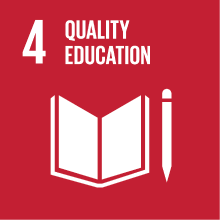CHINESE LANGUAGE 2
- Academic year
- 2025/2026 Syllabus of previous years
- Official course title
- LINGUA CINESE 2
- Course code
- LM007I (AF:502475 AR:322053)
- Teaching language
- Italian
- Modality
- On campus classes
- ECTS credits
- 12
- Degree level
- Master's Degree Programme (DM270)
- Academic Discipline
- L-OR/21
- Period
- 1st Semester
- Course year
- 2
- Where
- VENEZIA
- Moodle
- Go to Moodle page
Contribution of the course to the overall degree programme goals
Expected learning outcomes
1A. Becoming familiar with the basic linguistic terminology of discourse analysis and translation studies
1B. Acquire skills in the analysis of language and its rhetorical devices, with particular reference to Chinese.
2. Ability to apply knowledge and understanding
2A. Knowing how to perform a linguistic analysis on different aspects of the mother tongue and the Chinese language, taking into account the universal properties of language and the interlinguistic variation parameters with respect to some specific phenomena.
3. Ability to judge
3 A. Knowing how to formulate and argue hypotheses, while developing a critical approach to the evaluation of alternative hypotheses as well.
4. Communication skills
4 A. Acquire the ability to discuss topics related to the world of economics and globalization issues using the appropriate terminology.
4 B. To know how to interact with peers and with the tutor, in a critical and respectful way, both in presence and on the forum of the virtual classroom.
5. Learning skill
5 A. Knowing how to take notes and share them in a collaborative way on the online platform.
CEFR Level: C1
Can understand a wide range of demanding, longer clauses, and recognize implicit meaning.
Can express ideas fluently and spontaneously without much obvious searching for expressions.
Can use language flexibly and effectively for social, academic and professional purposes.
Can produce clear, well-structured, detailed text on complex subjects, showing controlled use of organizational patterns, connectors and cohesive devices.
Pre-requirements
Contents
- 30 hours of reading classes focusing on understanding contemporary socio-political reality through an examination of verbal communication. Specifically, this section of the course is divided into three units:
Unit 1: Theoretical and methodological introduction to the concept of "discourse" and discourse analysis.
Unit 2: Analysis of media narratives in the PRC.
Unit 3: Analysis of Chinese political discourse.
Through the analysis of news media, academic essays and official documents on current socio-political topics, this part focuses on the improvement of language skills and complex grammar structures, related to formal language, in addition to the in-depth analysis of specific topics discussed by the essays.
- 60 hours of training in conversation (A);
- 60 hours of training in Italian- Chinese translation (B).
Referral texts
Dictionaries:
- Wenlin 3.x (www.wenlin.com) or later.
- Xinhua zidian, Beijing, Shangwu yinshuguan, 1971 or later.
and:
- Casacchia G. e Bai Yukun, Grande dizionario Cinese-Italiano, IsIAO, Roma 2008, 2 vols.
or:
- Han-ying da cidian - Chinese-English Dictionary, a cura di Wu Guanghua, Shanghai, Shanghai Jiaotong Daxue chubanshe, 1993 or later, 2 vols.
For translation into Chinese:
- Zhang Shi Hua, SFLEP Dizionario Conciso Italiano-Cinese Cinese-Italiano, Waiyu jiaoyu chubanshe, Shanghai 2006 (Italian edition: Dizionario cinese-italiano italiano-cinese, Hoepli, Milano 2007)
or:
Dizionario italiano-cinese - Yi-han cidian, Beijing, Shangwu yinshuguan, 1985 e succ.
Manuals:
Nicoletta Pesaro (a cura di), La traduzione dal cinese: Riflessioni, strategie e tipologie testuali (Hoepli 2023).
Florian Schneider, Studying Political Communication and Media in East Asia A Playful Textbook (Amsterdam UP 2025)
Further readings will be suggested during the course.
Assessment methods
- conversation in Chinese.
- translation from Italian into Chinese. One hour and a half.
- an essay written by each student during the course, which is to be handed in one week before the exam. The essay will focus on the analysis, in light of the theoretical perspectives covered in the course, of one or more Chinese texts on a topic relevant to the texts studied during the course.
The assessment methods are the same for attending and non-attending students, who can keep up with the course's progress through Moodle.
Type of exam
Grading scale
The outcome of the individual exam components (oral exam, translation into Chinese, and essay) is overall excellent. The candidate demonstrates excellent command of the topics covered in the oral exam and the ability to describe them in Chinese, shows excellent ability to translate a short text from Italian into Chinese, and is fully able to translate a short Chinese text on the topics covered by the course, demonstrating excellent ability to render linguistic and rhetorical devices specific to the textual genre addressed in the course.
27-25:
The outcome of the individual exam components (oral exam, translation into Chinese, and essay) is overall more than good. The candidate demonstrates good command of the topics covered in the oral exam and the ability to describe them in Chinese, shows good ability to translate a short text from Italian into Chinese, and is able to translate a short Chinese text on the topics covered by the course, demonstrating good ability to render linguistic and rhetorical devices specific to the textual genre addressed in the course.
24-22:
The outcome of the individual exam components (oral exam, translation into Chinese, and essay) is fair. The candidate demonstrates fair command of the topics covered in the oral exam and the ability to describe them in Chinese, shows fair ability to translate a short text from Italian into Chinese, and is able to translate a short Chinese text on the topics covered by the course, demonstrating fair ability to render linguistic and rhetorical devices specific to the textual genre addressed in the course.
21-18:
The outcome of the individual exam components (oral exam, translation into Chinese, essay) is sufficient. The candidate demonstrates sufficient command of the topics covered in the oral exam and limited ability to describe them in Chinese, shows sufficient ability to translate a short text from Italian into Chinese, and is able to translate a short Chinese text on the topics covered by the course, demonstrating limited ability to render linguistic and rhetorical devices specific to the textual genre addressed in the course.
Teaching methods
a) front lessons;
b) writing and conversation practice aimed at building and consolidating the knowledge, skills and competences necessary to meet the goal of the course;
c) tutoring aimed at discussing and clarifying specific language problems that emerged during the teaching.
2030 Agenda for Sustainable Development Goals
This subject deals with topics related to the macro-area "Human capital, health, education" and contributes to the achievement of one or more goals of U. N. Agenda for Sustainable Development


